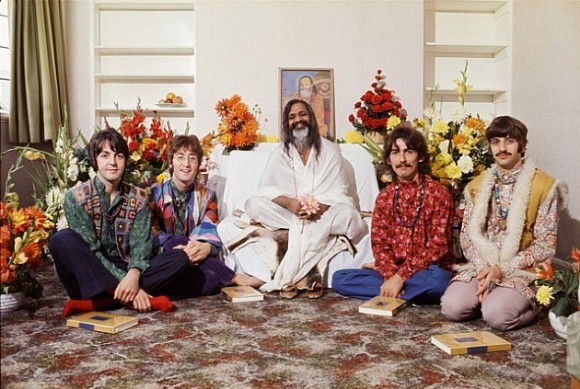In 2002 Transcendental Meditation (TM) founder and guru, Maharishi Mahesh Yogi, appeared on Larry King Live and gave his first exclusive television interview in 25 years. The Maharishi, or “great seer,” envisioned a world where individual people tapped into their full potential and drastically improved their quality of life through channeled meditation that enhanced creativity, intelligence, fulfillment and, ultimately, happiness. During the interview, King asked why Transcendental Meditation seemed so hard to learn and the Maharishi responded, “Everyone who has learned it knows how simple it is and how easy it is because one’s own consciousness cannot be difficult to anyone. It’s one’s own life; one’s own intelligence. There’s nothing difficult at all.” But as history has shown, TM has been far from simple. The new religious movement has been shrouded in religious and scientific controversy since its conception in 1958, and has globally expanded to include a large diverse following from the gurus of Indian to the stars of Hollywood.

If not for The Beatles, the 1960s counter-culture, and the public exposure it brought the Maharishi, TM may have never flourished in the Western world. In 1968, the fab four travelled to Rishikesh, India to fully immerse themselves in the study of TM under the Maharishi. As a result, the Maharishi became more of a pop cultural icon rather than a wise guru or sage. He took advantage of this public exposure and even began touring with The Beach Boys, giving TM seminars before concerts. The technique’s emphasis on internal peace and global happiness appealed to the 1960s counter-culture and expanded membership and intrigue into the 1970s. TM went through dramatic changes in membership, structure and representation in the 1970s as public exposure continued to be a driving force for the meditation program. The movement even branched into academia as the Maharishi University of Management (Fairfield, Iowa) opened in 1974 and promoted a “conscience based education” fundamentally grounded in the TM technique (MUM website).

Celebrity and media exposure has also continued to be kind to the Transcendental Meditation program and movement. The David Lynch Foundation has gathered support from numerous celebrities, including Oprah Winfrey, Jerry Seinfeld and Russell Brand, as they all promote the positive mental and physical effects TM has had on their daily lives. News coverage additionally highlights the cognitive and bodily improvements within TM members. In 2011, ABC News conducted a report comparing the benefits of meditation and medication on students and children with ADHD. The main focus of the report was how ADHD medicine, such as Adderall, increases risks in sudden death and cardiovascular problems, and advocates how TM is a superior solution. Despite fairly positive media coverage and celebrity endorsements, TM has come under attack from scientists and academics outside the program and movement. One such criticism is that the technique acts like a placebo that relaxes the body and mind, but does not directly influence or incite the positive results. Other such criticism attacks the validity of scientific and health data provided by TM advocates in relation to mind and body improvements because of the technique.
Even though Maharishi Mahesh Yogi died in February of 2008, his TM program and message continues to raise debates in academia and science, and positively influences members’ daily lives. Although the technique has roots in the Vedic tradition, it stresses very little religious aspirations for fulfillment. TM classes are offered throughout the United States and are easily accessible, but potentially expensive. In the modern day, TM is mostly used for self-help and stress relief while promoting a sense of creativity, mindfulness and oneness.
[sdonations]2[/sdonations]
